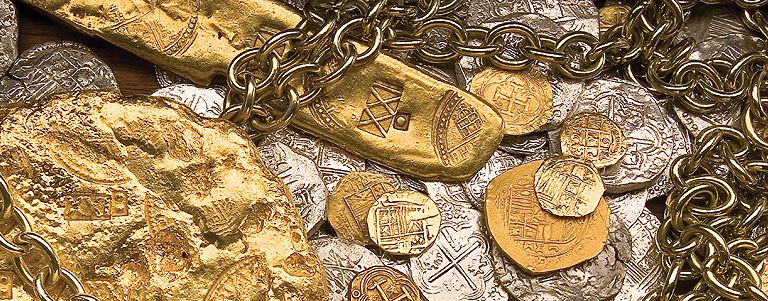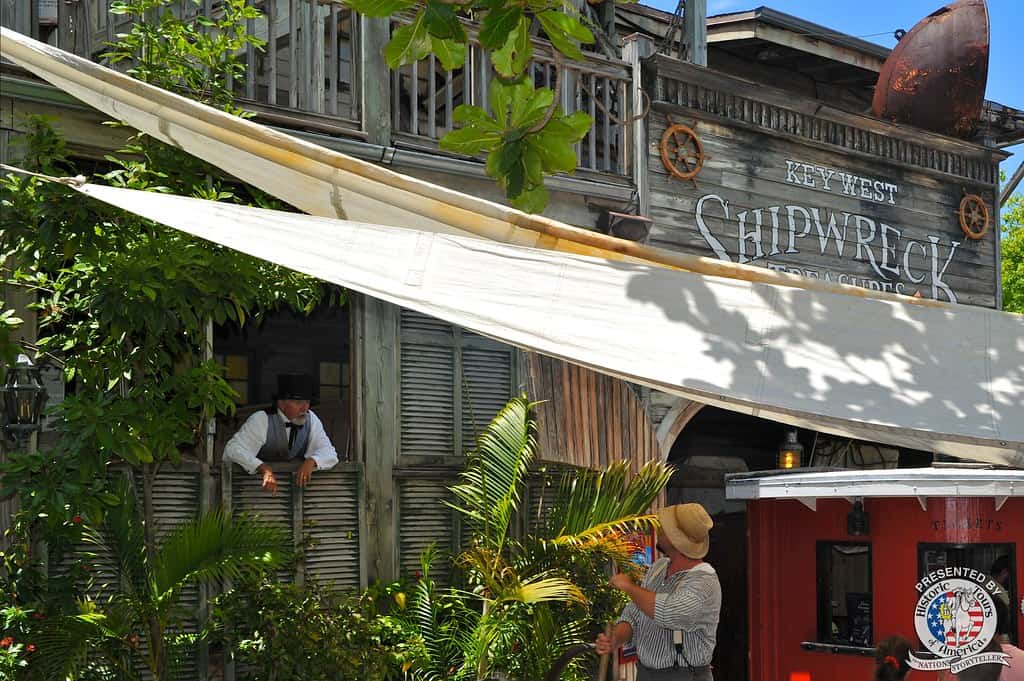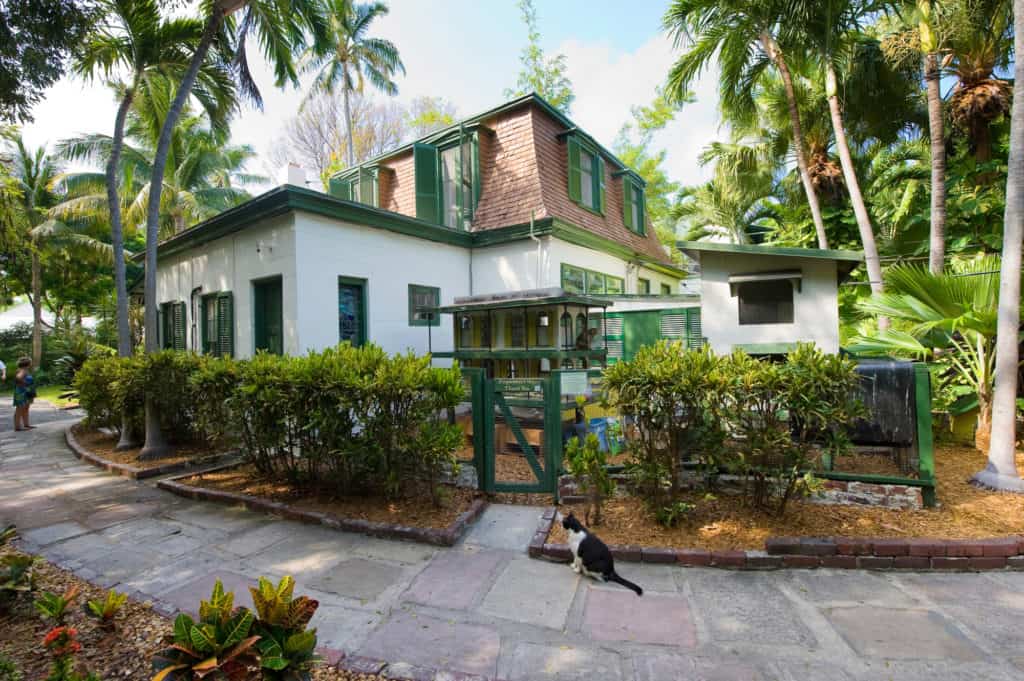Calling All Treasure Hunters: Discover Key West’s Amazing Sunken Riches

Key West is full of treasures, from entertaining attractions to delicious foods, and when you visit you should plan on experiencing as many as you can. But the troves found in the surrounding waters—the result of Key West’s special location at the convergence point of the Atlantic and Gulf of Mexico, and its place in history—deserve a spot at the very top of your list of must-sees.
Key West’s Rich Maritime History
First, a bit about that location and history: From the 1530s to the late 1700s, the waters around Key West were a well-traveled commercial shipping highway for Spanish galleons that were dispatched in fleets to the New World to pick up valuable goods around the Caribbean, Central and South America. Unfortunately, this cargo, which included tons of gold and silver (coins, ingots and objects), emeralds and other artifacts, was subject to the assaults of pirates, fierce hurricanes and rocky shorelines.
Over the years, roughly 30-40 Spanish ships sunk in the waters around Florida, producing a treasure hunter’s dream on the sea floor—incredible wealth for those courageous, patient, driven and lucky enough to search for and find the hauls. Pirate ships, slave ships, Civil War ships and early 20th-century cargo ships also went down in the depths off South Florida, providing a historical motherlode, if not always boatloads of merch.
While for the most part today’s laws prohibit treasure seekers from keeping any of the bounty they discover in Florida area waters—it’s the rightful property of the state—there are still wonderful places to tap into the finds of intrepid shipwreck explorers who managed to win legal ownership of their mind-blowing discoveries.
A most stunning underwater treasure discovery
Late visionary Mel Fisher was one of them. In 1985, after a 16-year search, he recovered a staggering 40 tons of gold and silver from the Spanish galleon Nuestra Senora de Atocha, which sank near the Dry Tortugas in 1622. And after, he waged and won a battle in the U.S. Supreme Court to keep most of his find (he donated 20 percent of the bounty to the state).
Take part in the fun, romance and adventure of shipwreck treasure hunting
Today, Mel Fisher’s Treasures, a historic shipwreck recovery enterprise (under the aegis of Mel’s son Kim Fisher) shares with others the right Mel Fisher gained to continue exploring and keeping found treasure by giving them the chance to visit, dive and search for the remaining cargo of the Atocha and Santa Margarita (Atocha’s sister ship), reportedly valued at about 280 million dollars. The goods range from copper ingots, silver coins and silver bars to gold bars, gems and jewelry. Non-divers can sift for emeralds on the decks of the enterprise’s expedition boats—the Dare and Magruder.
Explore the wealth at the Mel Fisher Maritime Heritage Museum
Visit the Mel Fisher Maritime Heritage Museum, which puts the maritime history of the area on display, to see exhibits showcasing the Atocha and Santa Margarita galleons; the Santa Clara, an earlier Spanish galleon sunk in 1564; items from the 1700 Henrietta Marie slave ship; the 1827 pirate slave ships Guerroro and HMS Nimble; and more. The museum is not only a fun and fascinating place to see sunken treasure, but also a nationally acclaimed research and archeology institution. You can even take a lab tour to learn more about the excavation and conservation of shipwrecks.
Time Travel at the Key West Shipwreck Treasure Museum

Another great place to visit that helps bring Key West’s gripping maritime history to life is the Key West Treasure Museum, housed in a mid-19th century wood warehouse in Mallory Square. Here, you can immerse yourself in the year 1856 (aka the era of wreckers), when the city became the richest city in the U.S. and the Isaac Allerton vessel, built in 1838, was sunk by a hurricane on the Florida Keys reef.
An entertaining mix of actors (playing members of a wrecking crew), films and real-life artifacts from this ship let you experience the wrecking industry that employed the early residents of Key West—yep, the waters around Key West were so treacherous for the more than 100 ships that sailed them back then that there was literally an entire industry pegged to watching them navigate the Florida Reef (from observation tower perches), rescuing their crewmen and salvaging their cargo when they wrecked. Wreckers could get 25-50 percent of the profits of the booty they salvaged through wrecking courts.
At the museum, you’ll get a sense of the nature of that bounty by viewing the original cargo of the Isaac Allerton ship (it was the richest wreck in Key West history) that’s on display here. You can even hold a silver bar that date backs to 1656. Step into the shoes of the wreckers by climbing the museum’s 65-foot lookout tower—just channel your inner wrecker and treasure salvager.
Tip: Catch a ride to the museum with Old Town Trolley Tours, which takes visitors to all the top Key West areas and attractions, while providing interesting anecdotes and historical facts. Hop on or off at any of the stops.
Seek a Famous Writer’s Last Penny at the Ernest Hemingway Home & Museum

Like beauty, treasure is in the eye of the beholder. Does a sand dollar or shell qualify? They may not be worth a pile of money, but they might hold value for you. The same is true of a cent.
To see a very different kind of underwater find with meaning that extends beyond its face value, visit the pool at the Spanish Colonial-style Ernest Hemingway Home & Museum, where the legendary Nobel-Prize-winning writer took up residence in 1931 and where various mementos associated with his dramatic life and creative output are showcased.
The pool, built from 1937-1938, is one of the most amazing features of this National Historical Landmark. It was the first in-ground pool in Key West and it cost so much ($20,000 at the time) that, during its construction, Hemingway took a penny out of his pocket and said, “Here, take the last penny I’ve got!” while pressing it into the wet cement on the pool’s patio. Hunt for this penny from heaven between the flagstones at the pool’s north end.
Who knows what else you’ll see while keeping your eyes peeled? You might even spot a six-toed cat (is that a treasure?) among the many felines that roam the property.

